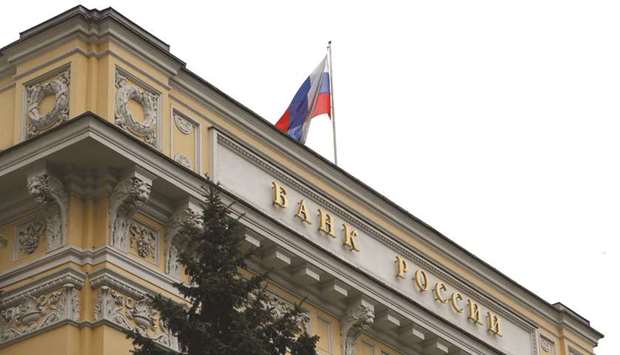The central bank in Moscow held its key interest rate unchanged for the first time since July and said the potential for cuts “shrank somewhat.”
The benchmark will stay at 7.25% after five consecutive reductions, according to a statement on Friday.
“Geopolitical factors and accelerated yield growth in advanced economies may cause surges of volatility in financial markets and affect expectations for the exchange rate and inflation,” policy makers said. “Furthermore, uncertainty still persists over the parameters of decisions on taxes and the budget.”
Without singling out the US by name, the Bank of Russia described a challenging economic landscape, reshaped first by the harshest American penalties to date, followed by the rise in yields in the $14.9tn Treasuries market. Only a month ago, Russian policy makers saw faster cuts this year on the way to bringing borrowing costs to a level deemed neutral, meaning a nominal key rate of 6% to 7%.
Since then, the latest round of sanctions upended Russia’s currency and stocks and threatened to touch off inflation. The 10-year Treasury yield, the benchmark for everything from US mortgages to dollar bonds in developing nations, rose above 3% for the first time since January 2014. The Federal Reserve, which is expected to leave policy on hold at the meeting next week, has led the way on tightening among global central banks with six rate increases since 2015.
In Russia, the plan to reach looser policy in 2018 is still in place, but the central bank said on Friday that “the estimated neutral interest rate has shifted closer to its upper bound within the range.” It “still assumes that monetary policy will become neutral in 2018,” according to the statement.
The rouble is the world’s second-worst performer this month with a loss of about 8% against the dollar. Although it traded stronger after the rate announcement, Morgan Stanley said the decision to take a pause won’t be “enough to support the currency and offset the negative impact of a less supportive current account” as well as continued foreign-exchange purchases by the Finance Ministry and “weak sentiment after the recent sanctions.”
“The central bank’s confidence in the inflation outlook keeps easing on the agenda, but it only runs so deep. The rouble’s extra boost to price growth is likely to limit further rate cuts this year to another quarter-point move,” according to Scott Johnson, Bloomberg Economics.
A depreciation of 10% may add a percentage point to inflation, according to the central bank’s research and forecasting department. While rouble weakness in April may contribute to faster price growth, “this does not create risks of inflation overshooting the target,” the central bank said.
Price growth already sped up in March for the first time in nine months, accelerating to 2.4% from a year earlier. While inflation expectations of households for a year ahead, based on a survey conducted before the latest sanctions, fell this month, they are still at more than triple the headline number for March.
“The bar for that additional easing looks higher now,” said Inan Demir, a London-based economist at Nomura International Plc. “We might expect further caution and another on-hold decision in June, but if the inflation outlook remains benign, and more importantly the sanctions outlook stabilises, rate cuts may be on the table in the second half of the year.”

